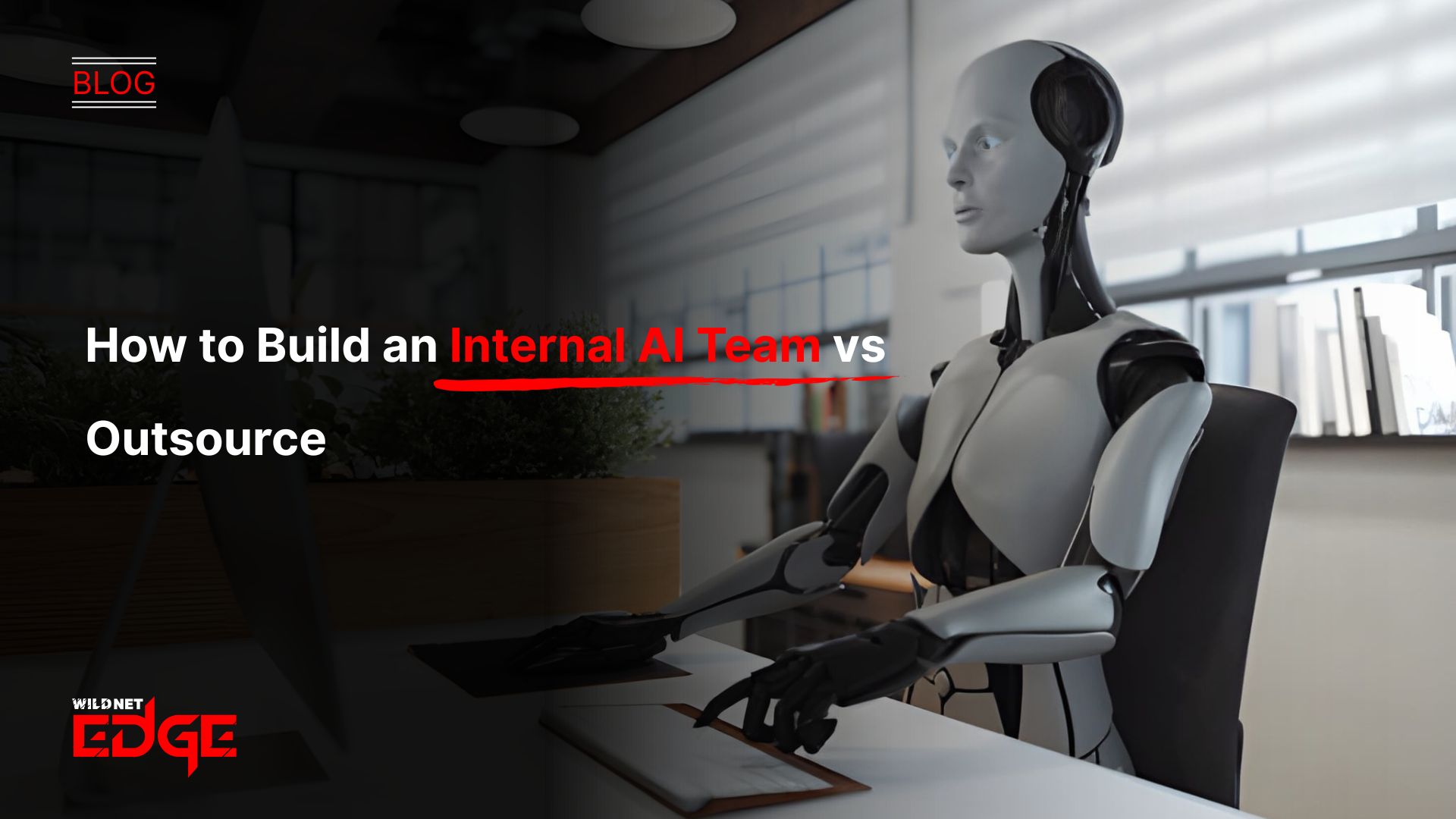TL;DR
This article provides a strategic framework for measuring the return on investment of AI projects. It explains that effective AI ROI measurement moves beyond simple cost-benefit analysis to capture direct financial gains and indirect strategic advantages. The guide outlines a four-quadrant framework for assessing AI value realization: cost savings through efficiency, revenue generation through new opportunities, risk mitigation through improved compliance, and strategic value through enhanced capabilities. It also emphasizes that a successful AI project ROI calculation requires a clear baseline, a phased measurement approach, and the right analytics tools, ensuring businesses can justify their investments and scale initiatives effectively.
Investing in artificial intelligence is no longer a question of “if,” but “how.” As businesses pour resources into AI initiatives, the most critical question from the boardroom remains: “What is the return on this investment?” A clear, quantifiable answer is essential for securing budgets, scaling successful projects, and justifying the transformation effort. A robust framework for AI ROI measurement is not just good practice; it is the cornerstone of a sustainable and successful enterprise AI strategy.
Why Measuring AI ROI is a Unique Challenge
Calculating the return on a traditional IT project is often straightforward. However, measuring AI project ROI presents unique complexities. The benefits of AI are not always direct or immediate. While some projects, like automating a manual process, offer clear cost savings, others provide more strategic, long-term advantages that are harder to quantify, such as improved decision-making or enhanced customer experience. Many of these complexities emerge from common AI implementation challenges, which organizations must address before expecting measurable outcomes.
Without a dedicated framework for AI value realization, businesses risk misinterpreting the impact of their investments. They might abandon a promising initiative because its value isn’t immediately obvious, or they might continue to fund a project that isn’t delivering tangible business outcomes. A structured approach to AI ROI measurement is essential to navigate this complexity.
A Four-Quadrant Framework for AI ROI Measurement
It’s helpful to think about value in four distinct categories to capture the full impact of your AI initiatives. A successful AI project ROI calculation will consider metrics from each quadrant.
1. Cost Savings and Efficiency Gains
This is the most direct and straightforward quadrant to measure. These projects focus on using AI to do things cheaper, faster, and with fewer errors.
- Key Questions: Can we automate a repetitive manual task? Can we reduce operational overhead? Can we improve asset utilization?
- KPIs:
- Reduction in person-hours for a specific task.
- Decrease in operational costs (e.g., energy, materials).
- Reduction in error rates.
- Increase in employee productivity.
2. Revenue Generation and Growth
This quadrant focuses on using AI to create new revenue streams or enhance existing ones. These projects are about doing things that were not possible before.
- Key Questions: Can we create new AI-powered products or services? Can we improve sales conversion rates? Can we increase customer lifetime value?
- KPIs:
- Increase in average order value (AOV) from recommendation engines.
- Higher lead conversion rates from predictive scoring.
- Revenue from new AI-driven services.
- Increase in customer retention or repeat purchases.
3. Risk Mitigation and Compliance
This is an often-overlooked but critical area of AI value realization. These projects use AI to reduce exposure to financial, operational, or regulatory risks.
- Key Questions: Can we improve fraud detection? Can we ensure compliance with industry regulations? Can we enhance cybersecurity?
- KPIs:
- Reduction in fraudulent transactions.
- Decrease in compliance-related fines.
- Faster detection of security threats.
- Reduction in workplace safety incidents.
4. Strategic Value and Competitive Advantage
This is the most qualitative but impactful quadrant. These projects provide long-term, strategic benefits that are hard to put a direct dollar value on but are crucial for future success.
- Key Questions: Does this AI initiative improve our brand reputation? Does it accelerate our research and development? Does it give us a data asset that our competitors don’t have?
- Example KPIs (often qualitative):
- Improved customer satisfaction scores (CSAT/NPS).
- Faster time-to-market for new products.
- Enhanced brand perception in the market.
- Improved employee morale and retention.
Our AI ROI Measurement in Action: Case Studies
Case Study 1: Cost Savings in a Manufacturing Firm
- The Challenge: A large manufacturing company was experiencing significant financial losses from unexpected machine failures on its production line.
- Our Solution: We developed and deployed a predictive analytics AI solution that monitored their equipment in real-time. The AI model could predict a potential failure with 95% accuracy up to two weeks in advance.
- The ROI Measurement: We calculated the ROI of the AI project based on the “Cost Savings” quadrant. We baselined their average monthly losses from downtime. After implementation, the reduction in downtime and maintenance costs was a direct, measurable saving, showing a positive ROI within nine months.
Case Study 2: Revenue Generation for an eCommerce Platform
- The Challenge: An online retailer wanted to increase its average order value and improve customer engagement.
- Our Solution: As their chosen product development company, we built a sophisticated AI-powered recommendation engine that provided highly personalized product suggestions for each user.
- The ROI Measurement: The focus here was on “Revenue Generation.” We used A/B testing to compare the AOV and conversion rates of users who received the AI-powered recommendations versus a control group. The measurable lift in these KPIs provided a clear, quantifiable ROI for the AI project.
Our Technology Stack for AI Analytics and Measurement
You need the right tools to collect and analyze data to effectively track AI ROI measurement.
- BI & Visualization: Tableau, Microsoft Power BI, Looker
- Data Warehousing: Snowflake, Google BigQuery, Amazon Redshift
- AI & Machine Learning: TensorFlow, PyTorch, Scikit-learn
- Cloud Platforms: AWS, Google Cloud, Microsoft Azure
- Analytics Tools: Mixpanel, Amplitude, Google Analytics
Conclusion
A structured approach to AI ROI measurement is essential for any business serious about its AI journey. By moving beyond simple cost calculations and embracing a multi-faceted framework, you can capture the full business impact of your initiatives. A clear focus on AI value realization allows you to justify your investments, learn from your projects, and build a powerful case for scaling what works.
At Wildnet Edge, our AI-first approach is grounded in delivering measurable outcomes. We partner with you to build technology, define the KPIs, and build measurement systems that prove their value to your bottom line, while helping you navigate AI implementation challenges and advance steadily along your AI maturity model.
FAQs
The most common mistake is focusing only on direct, short-term cost savings. This leads companies to ignore the massive potential for revenue generation and long-term strategic value, causing them to underinvest in their most transformative AI opportunities.
You use proxy metrics for projects focused on risk mitigation or strategic value. For example, for a compliance AI, the ROI could be the “avoided cost” of a potential fine. For a customer experience AI, the ROI could be linked to an increase in Net Promoter Score (NPS), a known leading indicator of future revenue growth.
This varies greatly. A simple automation project might show a positive ROI in 6-9 months. A more complex, strategic project, like building a proprietary data asset, might take 2-3 years to show its full value. This is why a phased approach to AI value realization is essential.
A baseline measures your performance before you implement the AI solution. For example, your baseline might be your current customer churn rate or average transaction cost. Without a clear baseline, measuring the improvement or “lift” that your AI project delivered is impossible.
It should be a cross-functional effort. The project team tracks the technical and operational KPIs, while the business or finance department translates those metrics into a final, financial ROI calculation.
Explainable AI helps build trust in the system. When business users understand why an AI model makes a certain recommendation, they are more likely to adopt the tool and use it effectively. This user adoption is absolutely critical for achieving the projected ROI of an AI project.
The first step is to define the business objective for a specific AI project in a quantifiable way. Before you start, the key stakeholders must agree on the primary goal (e.g., “reduce customer support tickets by 20%”) and the specific KPIs that will be used to measure success.

Nitin Agarwal is a veteran in custom software development. He is fascinated by how software can turn ideas into real-world solutions. With extensive experience designing scalable and efficient systems, he focuses on creating software that delivers tangible results. Nitin enjoys exploring emerging technologies, taking on challenging projects, and mentoring teams to bring ideas to life. He believes that good software is not just about code; it’s about understanding problems and creating value for users. For him, great software combines thoughtful design, clever engineering, and a clear understanding of the problems it’s meant to solve.
 sales@wildnetedge.com
sales@wildnetedge.com +1 (212) 901 8616
+1 (212) 901 8616 +1 (437) 225-7733
+1 (437) 225-7733































